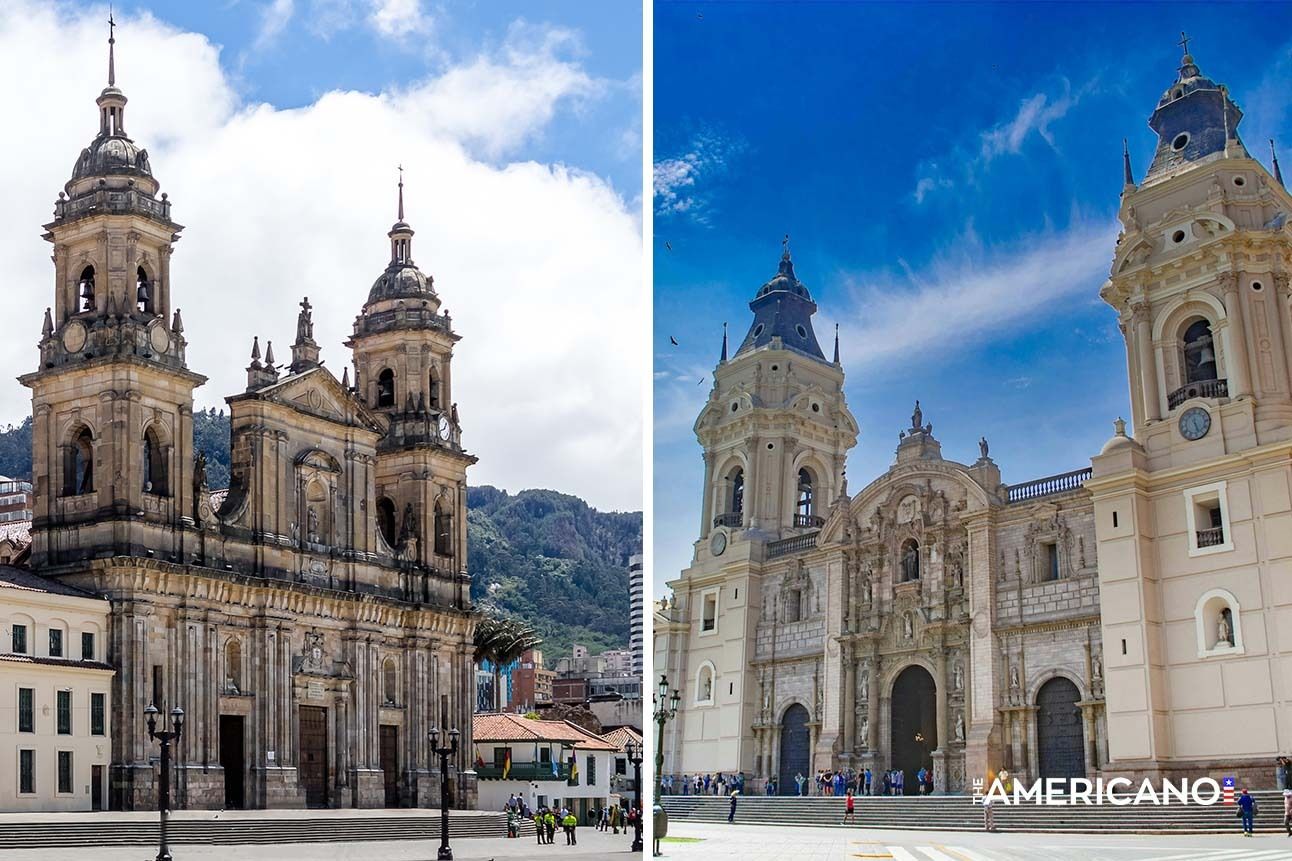Two neighbors. One border. And two completely different ways to live the good life in South America.
On one side, you’ve got Colombia — sleek, modern, and on the move. Digital nomads sipping coffee in Medellín coworking spaces, retirees sunning in Cartagena, startups buzzing in Bogotá. It’s energy, opportunity, and optimism in one package.
On the other side is Peru — slower, deeper, and anchored in tradition. Ancient culture stitched into everyday life, market stalls overflowing with produce, and a cuisine that’s conquered the world. It’s not racing forward. It’s remembering where it came from.
So which one actually gives you the better life abroad in 2025? Let’s unpack it — money, visas, taxes, lifestyle, and that intangible feeling that turns a move into a home.
Cost of Living: Where Does Your Dollar Go Further?
In Colombia, you can live comfortably in cities like Medellín, Bogotá, or Cartagena on about $1,200–$1,500/month. Rent runs $400–$800, utilities are fair, and lunch specials hover around $3–$6. The peso has stabilized, inflation’s cooling, and planning a monthly budget doesn’t feel like financial Jenga.
Peru is a touch cheaper. $900–$1,300/month buys a great life in Arequipa or Cusco, and even in Lima, rents between $300–$600 stretch your money further. Local markets brim with fresh produce at laughably low prices, though imported goods cost more.
Winner: It’s a tie. Colombia wins on infrastructure and amenities, Peru wins on price.
Flights & Connectivity: Getting In and Out
Colombia’s El Dorado Airport (Bogotá) is a bona fide global hub — direct flights to Miami (3.5h), New York (6h), Madrid, Toronto, and dozens more. You can even skip Bogotá entirely and fly international from Medellín, Cartagena, or Cali.
Peru’s Jorge Chávez Airport (Lima) is solid for regional travel but thinner for transatlantic options. Expect fewer routes and higher fares to North America.
Winner: Colombia. More routes, shorter flights, and easier weekend escapes.
Visas & Residency: The Bureaucracy Game
Colombia’s digital nomad visa is one of Latin America’s most flexible — stay up to 2 years with $1,100/month in foreign income. Retirees can get a M-11 visa with similar proof from a pension. After 5 years, you can apply for permanent residency.
Peru’s system feels more old-school but hides a major perk: citizenship in just 2 years. Retirees qualify with $1,000/month in pension income; investors or rentistas can use passive income. Paperwork moves slower, but the payoff is faster.
Winner: Peru. Colombia’s simpler, but Peru’s citizenship track is a big deal.
Taxes: Where the Money Matters
Colombia taxes residents (183+ days/year) on worldwide income, though pensions up to ~$12,000/month are exempt. You’ll want a good accountant — especially Americans — since there’s no US–Colombia tax treaty.
Peru keeps it simple: territorial tax system. You’re taxed only on Peruvian-sourced income. Foreign pensions, remote work, or investments stay untaxed unless you bring the funds into Peru.
Winner: Peru. Cleaner system, fewer surprises, friendlier for retirees and nomads.
Healthcare: When You Need It
Colombia ranks among Latin America’s top healthcare systems. Public insurance (EPS) runs $30/month, private coverage $60–$150, and hospitals in Medellín, Bogotá, and Bucaramanga rival the U.S. — at 10% of the price.
Peru’s public system (ESSALUD) is affordable but slower; private hospitals in Lima, Arequipa, and Trujillo are excellent and cost $50–$100/month in insurance premiums.
Winner: Colombia. More efficient, more modern, globally ranked care.
Safety & Stability
Colombia’s safety reputation has transformed. Big cities are modern, vibrant, and — with common sense — safe. Petty theft exists, but violent crime against foreigners is rare. The government is stable, and infrastructure’s improving.
Peru is calm day-to-day but politically turbulent. Frequent protests (especially in Lima and Cusco) can disrupt travel. Economically, it’s steady — politically, less so.
Winner: Colombia. Predictability equals peace of mind.
Language & Integration
Colombian Spanish is the clearest, most neutral in Latin America — ideal for learners. Locals are famously patient, and English is spreading fast in major cities.
Peruvian Spanish has a slower, softer rhythm, with Quechua influences that add character but sometimes confusion. English is less common outside Lima.
Winner: Colombia. Easier Spanish, more bilingual locals.
Weather: Altitude vs. Latitude
Colombia doesn’t have seasons — it has altitude zones. Medellín sits at a perfect 75°F year-round, Bogotá at 65°F, Cartagena at 90°F. You just pick your city, pick your climate, and it stays that way.
Peru stretches from desert coast to Andean peaks to the Amazon. True seasonal shifts: Lima’s fog, Cusco’s dry/wet cycles, Amazon humidity.
Winner: Tie. Colombia wins for consistency; Peru for diversity.
Culture & Lifestyle
Colombia is rhythm, warmth, and motion. Salsa, reggaetón, late-night cafés, and an extroverted energy that sweeps you in.
Peru is depth, flavor, and heritage. It’s the heart of the Inca empire and the culinary capital of Latin America. Lima’s restaurants regularly top global charts, and Cusco feels like time travel.
Winner: Tie again. Colombia is modern vibrance; Peru is soulful authenticity.
Expat Communities
Colombia’s expat boom is real — Medellín, Bogotá, and Cartagena host thriving international scenes. Coworking, meetups, English-language cafés, and events are constant. (Hey, we even started Bogotá Nomads — it’s growing fast.)
Peru’s expat crowd is smaller and older, concentrated in Lima, Cusco, and Arequipa. It’s intimate and welcoming but quieter.
Winner: Colombia. Bigger, more diverse, and growing fast.
The Verdict: What Kind of Life Do You Want?
Let’s tally it:
Colombia wins: Flights, healthcare, safety, language, community.
Peru wins: Visas, taxes, lower costs.
Ties: Weather, culture, lifestyle.
So here’s the truth: Colombia is momentum. Peru is meaning.
Colombia gives you a modern base, infrastructure that works, and a community that’s building something new.
Peru gives you roots, rich culture, and a slower rhythm that feels timeless.
It’s not about which is “better.” It’s about how you want to live.
Do you want excitement and opportunity — or peace and perspective?
Either way, South America’s best chapters are being written right here.

